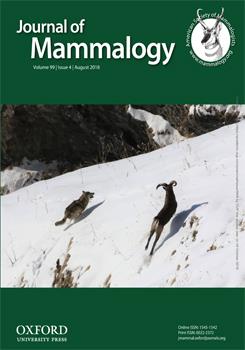The black-eared mouse
How to translate text using browser tools
18 June 2018
Geographic Cranial Variation in Peromyscus melanotis (Rodentia: Cricetidae) is Related to Primary Productivity
Diego F. García-Mendoza,
Celia López-González,
Yolanda Hortelano-Moncada,
Ricardo López-Wilchis,
Jorge Ortega
ACCESS THE FULL ARTICLE

Journal of Mammalogy
Vol. 99 • No. 4
August 2018
Vol. 99 • No. 4
August 2018
Morphometrics
resource availability
Rodentia
size variation




